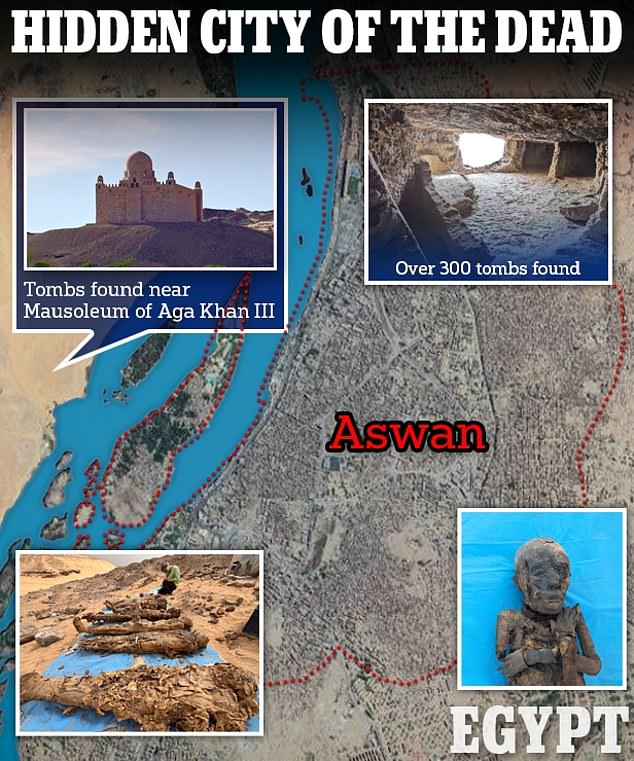Scientists have discovered a massive burial site with more than 300 tombs in Egypt that they are calling the new “City of the Dead.”
The city of Aswan was an important trading, quarrying and military area when it was first established more than 4,500 years ago, but the lives of its people have long remained a mystery.
The team has been working at the site for five years and recently discovered 36 tombs that were reused over 900 years to contain between 30 and 40 mummies each, with many containing families who likely died from infectious diseases.
Patrizia Piacentini, an archaeologist at the University of Milan, told DailyMail.com that the burial site spans nearly 270,000 feet and features up to 10 terraces of ancient tombs arranged in layers on the hillside near the modern Mausoleum of Aga Khan III.
“This was a truly spectacular find, unique in Egypt,” Piacentini said.
‘(The people who once lived in Aswan) covered the hill with tombs. It is a kind of City of the Dead.
Scientists have discovered a huge burial site with more than 300 tombs in Egypt that they call the new “City of the Dead.” The team has been working at the site for five years and recently discovered 36 tombs that were reused over 900 years to include between 30 and 40 mummies.
Aswan, one of the oldest continuously inhabited cities in the world, is located on the eastern bank of the Nile River.
It was home to quarries that supplied granite for many ancient Egyptian monuments that still stand and was a military outpost for the Romans, Turks and British.
The population included ancient Egypt, Persian, Greece, Rome and subtropical Africa.
Aswan was originally called Swenett and later called Swan, meaning market because it is located on a border where many products enter and leave.
“Aswan has always been a crossing point,” Piacentini said.
‘People came from the east to the west. People came here because it was the border, the products from the south came to Aswan and then they were dispersed everywhere.’
The first tomb was discovered in 2019 and contained four mummies, two of which are believed to be a mother and son who were buried together.
“At first we thought it was mother and son, but new CT scans showed they were two boys,” Piacentini said.
“But recently we found a woman near them who was probably their mother and the remains of a man, probably the father.”
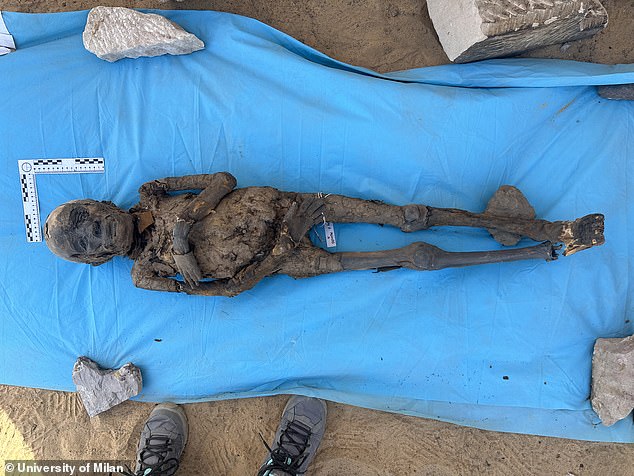
Many of the mummies showed signs of illness and the children suffered from anemia and malnutrition.
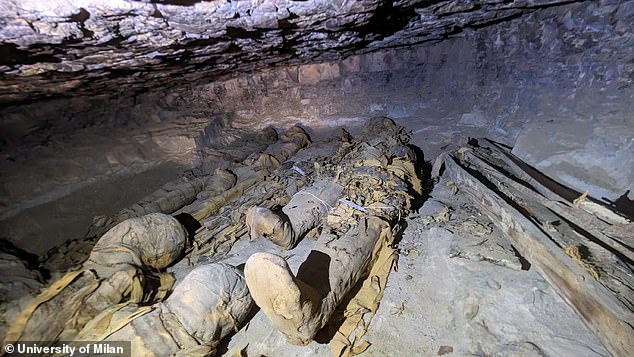
Studies of the mummies indicated that between 30 and 40 percent of those buried died in their youth, as newborns or as adolescents.
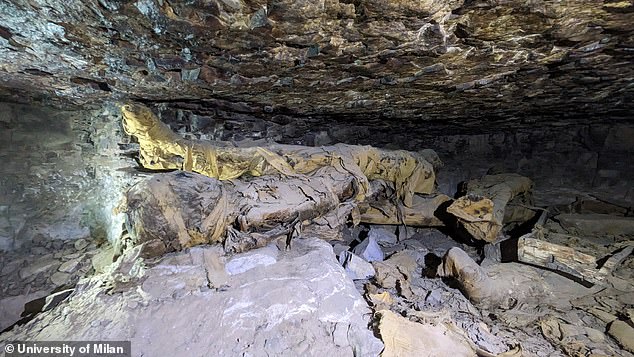
The latest excavation found an additional 36 tombs that were reused over the centuries to include between 30 and 40 mummies each, many of which were entire families that experts believe may have died from infectious diseases.
The excavation, which lasted five years, also revealed that people were buried according to their class.
The team found that members of the elite rested at the top of the hill, including the mummified remains of Aswan’s chief general, while the middle class was below.
Although the team has found dozens of tombs in each dig, the latest has revealed more secrets about the mysterious people who lived more than 2,000 years ago.
The 36 tombs date between the 6th century BC and the 9th century AD
Some of them have a coffin entrance with an open courtyard surrounded by milk brick walls, while others are carved directly into the mountain rock.
Ayman Ashmawy, who heads the Egyptian Antiquities Division of the Supreme Council of Antiquities, said studies of the mummies “indicated that 30 to 40 percent of those buried died in their youth, as newborns or teenagers.”
Among them was the mummy of a woman and child who probably died at the age of one or two; Their bodies were stuck together inside a stone coffin.
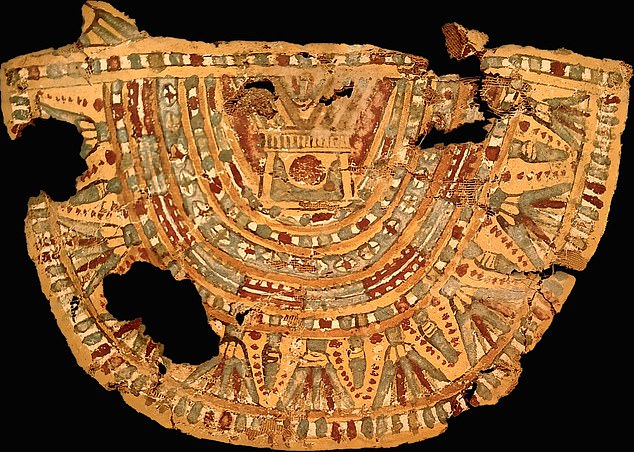
Some remains were wrapped cardboard or paper mache material, and burnt clay forms, stones, wooden coffins, and sacrificial tables.
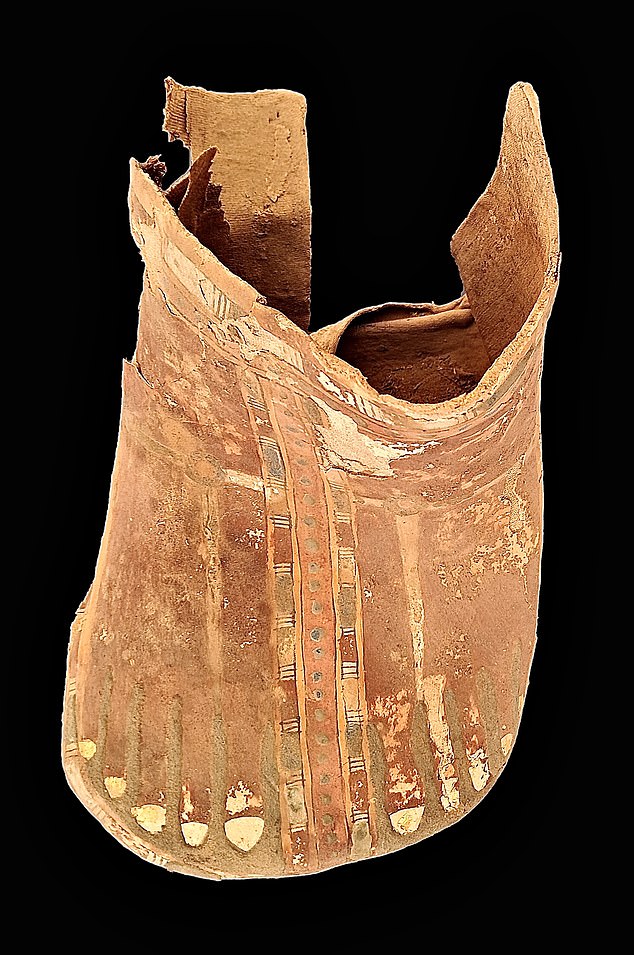
Offerings, such as pottery, wooden objects, and more, were also found in the tombs. Piacentini said there were “many objects.”
Some remains were wrapped cardboard, a paper mache material, and burnt clay forms, stones, wooden coffins, and sacrificial tables.
Piacentini told DailyMail.com that preliminary studies on the remains showed that “some suffered from infectious diseases, while others had bone disorders.”
“The children suffered from anemia, malnutrition and, in some cases, infectious diseases,” he continued.
‘Some of the bones we found had clear signs of tuberculosis.
‘Another case of amputation was also found in a woman who had her leg amputated but survived.’
Piacentini said the amputation, prompted by a callus on her knee, was likely performed by a surgeon or doctor considering she lived after the operation.
Other mummies showed signs of chest and intestinal diseases, and some women appeared to have suffered from osteoporosis.
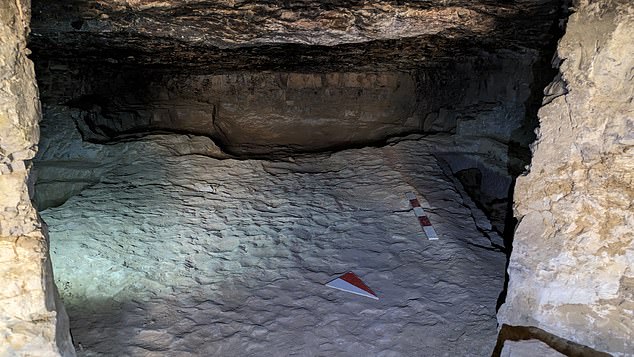
The team discovered that the elites rested at the top of the hill, including the mummified remains of Aswan’s chief general, while the middle class lay below.
The newly discovered tombs contained many small families who had been buried together.
“We found two or three of these small groups that may have died from infectious diseases,” Piacentini said.
Offerings such as pottery, wooden objects and more were also found in the tombs. Piacentini said there were “many objects.”
The team plans to study all the mummies and store only the most preserved ones in a museum-owned warehouse.
Piacentini said they will clean the tomb and then place the rest of the mummified human remains back inside, where they were initially placed before the tomb was resealed.
“This is their resting place,” he continued. “We find out their story and then we bring them back and close the grave. For me it was important from the beginning.”

